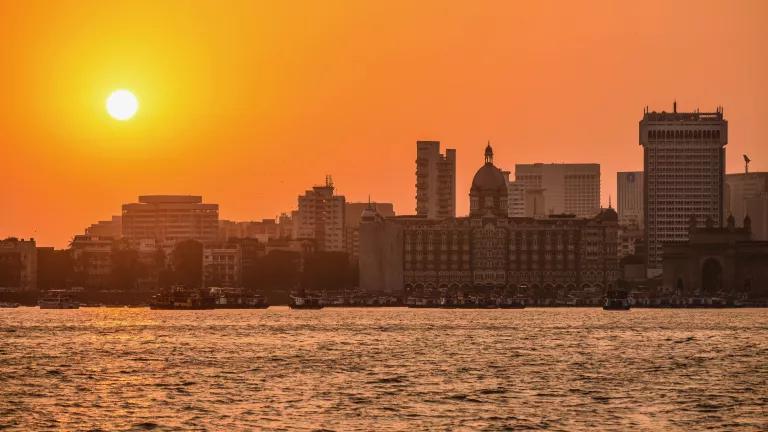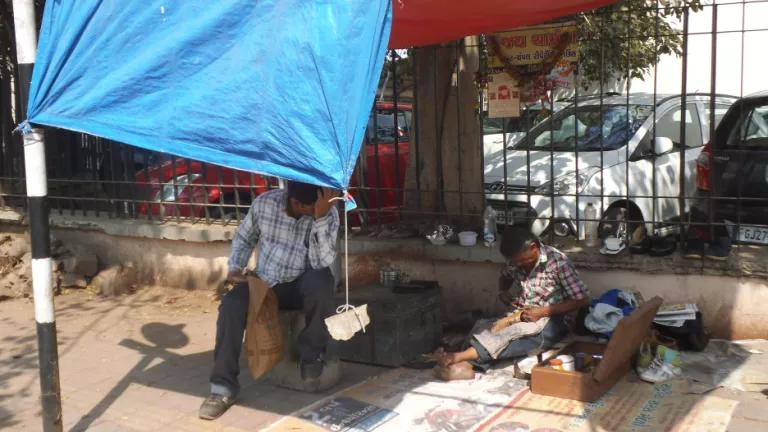Putting a Human Face on India’s Climate Progress
From embracing clean energy to improving waste management, these Indians are working to curb climate change—and ensure a cleaner, healthier future for their children.

Agariyas (salt farmers) in the Little Rann of Kutch desert, Gujarat, India
Bhaskar Deol/NRDC
From embracing clean energy to improving waste management, these Indians are working to curb climate change—and ensure a cleaner, healthier future for their children.
Midway through this week’s Global Climate Action Summit in San Francisco, I met with delegates working on the front lines of the clean energy movement in India, a visionary group of women for whom sustainable development holds the key to a brighter future for their children.
In the blazing-hot saline desert of Gujarat, women labor in heat that can top 110 degrees Fahrenheit to produce salt, pumping briny water across the flat land and scraping off the mineral left behind after it dries. In partnership with the Self Employed Women’s Association, one of India’s largest trade unions, NRDC has helped the women replace aging diesel-powered pumps with electric models powered by solar energy.

Members of the Self Employed Women’s Association speak at the Forum on India Climate Action in San Francisco, September 12, 2018.
The result has been less of the fine particulate and chemical pollution we know is linked to respiratory ailments and premature death. It’s meant less of the carbon pollution that’s driving climate change. And it’s giving a new generation a shot at a cleaner and brighter future.
That’s exactly why more than 4,000 officials, development experts, business leaders, and activists gathered this week in San Francisco to build on the momentum for global action to fight the widening scourge of climate change.
Amid the needed focus on policy, technology, and finance behind the global shift away from the dirty fossil fuels that are driving us to the brink of climate catastrophe, it’s well to remember what it’s all about: leaving our kids a more promising world.
When it comes to that, India’s future is vital to our own. A fast-growing country of 1.3 billion people, India combined with China last year to account for more than 40 percent of the worldwide growth in energy demand. That growth will continue as more of India’s people move from abject poverty to the global middle class.
That’s why it’s so important that India is working to curb its emissions of carbon dioxide and other dangerous pollution driving climate change. The world’s third-largest user of energy and producer of greenhouse gases, India has pledged to cut its energy intensity—its usage as a percentage of its economic output—by 33 to 35 percent by 2030, relative to 2005 levels. That promise, part of the 2015 Paris climate agreement, will mean hundreds of millions of tons less carbon pollution per year than India would otherwise produce.
The country faces challenges, to be sure, including air pollution and the health threats that come with it. Roughly 200 million of India’s people lack access to electricity, and the country is committed to power up in a way that’s consistent with its efforts to fight climate change. India’s moving forward to confront these and other challenges, though, while improving public health and overall quality of life.
“People’s lives have to become better,” explains Ajay Mathur, director general of the Energy and Resources Institute, or TERI, another NRDC partner. “Incomes have to increase.”
That’s exactly what solar-powered pumps are doing for the women of Gujarat. Buying fuel for the old diesel-powered pumps was a major expense that cut deeply into earnings for these women. Now, more than 1,100 solar-powered pumps have replaced diesel pumps and another 15,000 are expected to be installed in the coming years. Many of these salt harvesters are using the money they save from not having to buy fuel to send their children to school, or keep them in school longer.
Other examples abound.
Earlier this year, Hyderabad, the capital of the southern state of Telangana, and home to seven million inhabitants, became the first city in India to implement an online system for energy code compliance that potentially can be a model for other Indian cities, many of which are growing at a rapid pace while striving to meet energy demand and fight climate change. Telangana is also taking the lead in retiring diesel buses in favor of electric-powered models. Soon, the omnipresent three-wheel “tuck-tucks” will also be electric. “This is a big step for us,” the state’s principal secretary, Arvind Kumar, told reporters at a forum on India’s clean energy progress. “And we are making it mandatory.”

A traffic jam in Hyderabad, India
Dinodia Photos/Alamy
NRDC has partnered with the state government of Maharashtra and the city of Ahmedabad to develop a system to provide early warning of extreme heat conditions, in a part of India where hundreds, often thousands, of people die from soaring temperatures each year. The system is now used in 30 cities across 11 states and will be adopted by six more of India’s hottest states by 2020. “This,” explained Maharashtra’s principal secretary, Sujata Saunik, “has helped us protect the lives of millions of people.”
Meanwhile, in Pune, a city of more than three million people, a legion of some 3,000 women go door-to-door collecting waste from more than 600,000 houses. “This is cutting trips to the landfill,” reducing pollution, saving taxpayers money, and striking a blow against climate change, said Pune’s mayor, Mukta Tilak.
India, in other words, is showing the world what it means to reduce fossil fuel pollution today, to ensure a brighter future for our children tomorrow. That’s what this week’s Global Climate Action Summit is all about. That’s what this movement is all about. That’s what real leadership, anywhere in the world, is all about.



